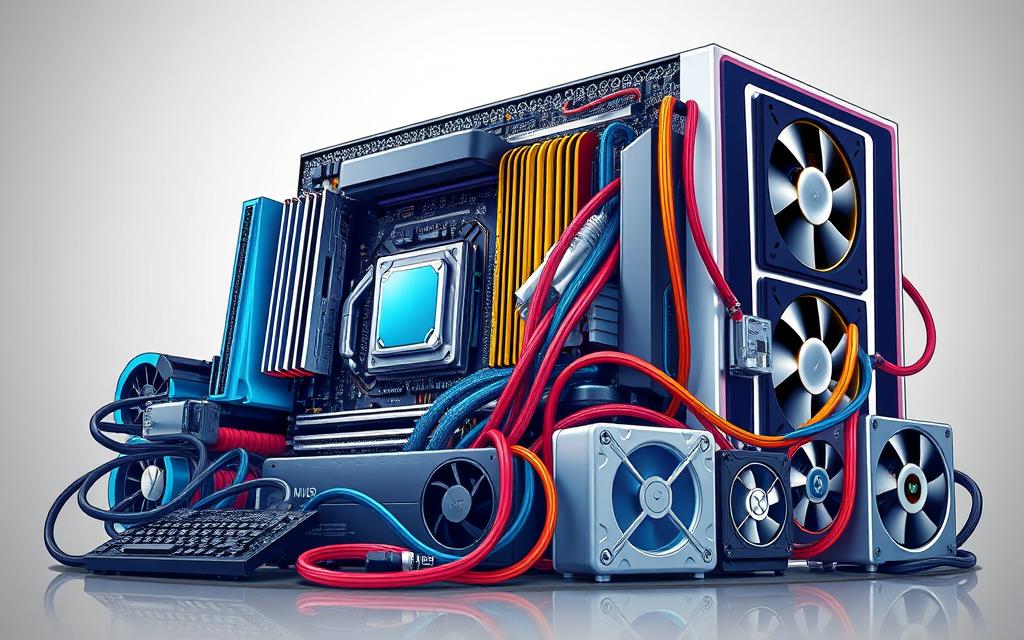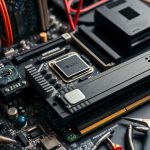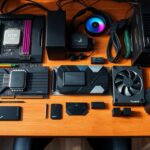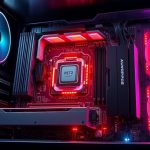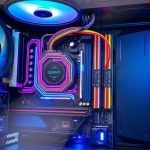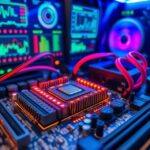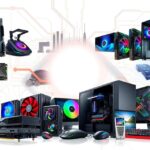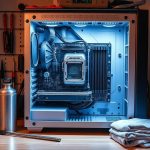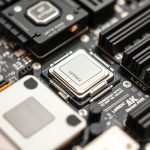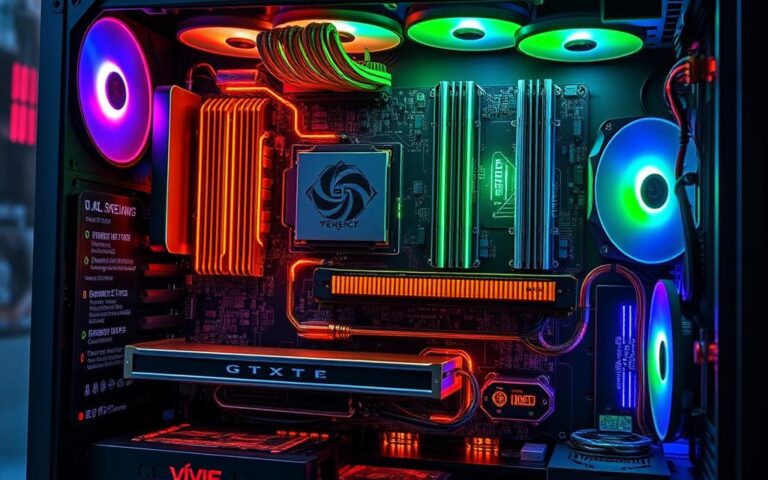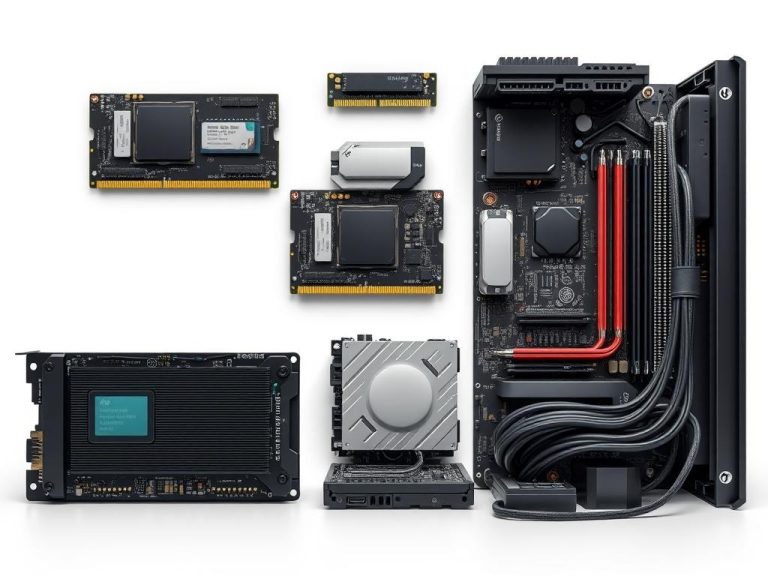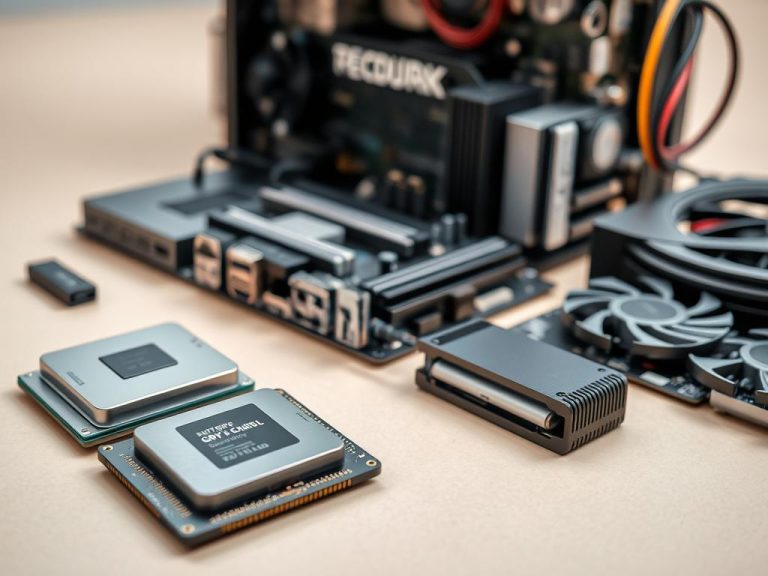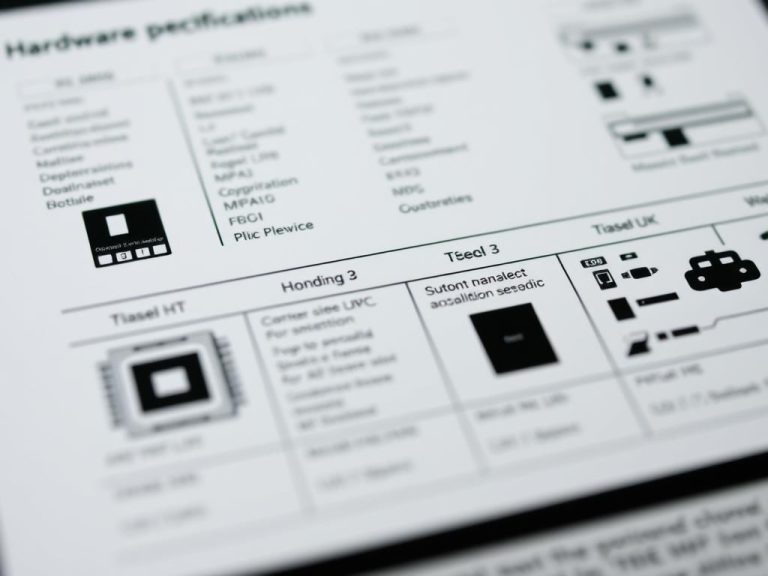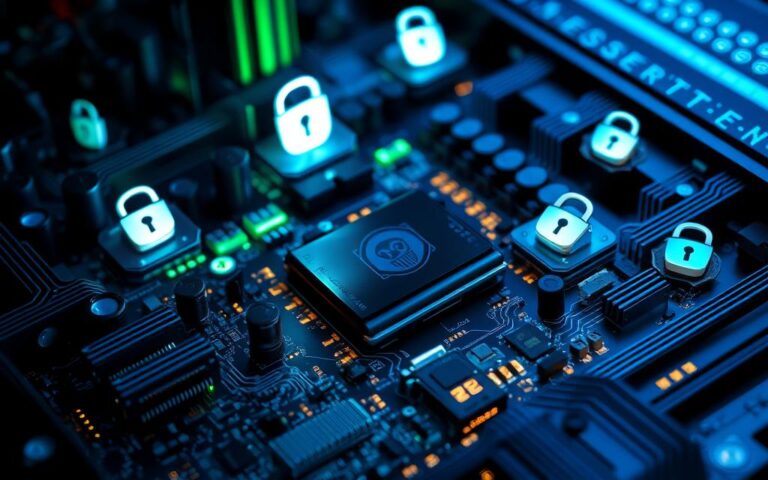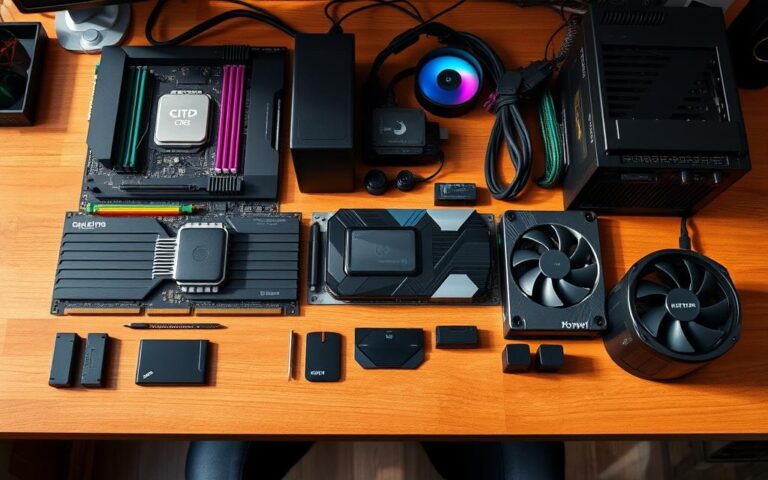Breaking Down the Hardware Components of a Computer
Understanding computer hardware is key for anyone who wants to keep or make their system better. The different parts of computer hardware are very important for a computer’s work and skill. Laptops and desktops may look different sizes, but they all need hardware and software to work well together.
Knowing what’s inside your computer helps spot problems and make it run faster by upgrading. For example, gamers might be okay with 8GB of RAM, but graphic designers often need 16GB or more. Also, SSDs are now changing how we store things, being faster and more reliable than old HDDs.
It’s very important to make sure hardware parts match well, especially with things like motherboards. This article will look at important parts like the motherboard, CPU, GPU, RAM, and storage. This knowledge will help make sure your computer works its best.
Introduction to Computer Hardware
Learning about computer hardware is crucial for good computing. This introduction to computer hardware looks at IT hardware. It includes physical parts needed for computing. We have input devices like keyboards, CPUs for processing, monitors for output, and HDDs and SSDs for storage. Knowing these hardware components helps us understand how systems work. This makes software run better and boosts our work efficiency.
Technology has grown fast, especially from 1986 to 2003, when hardware got over 50% better each year. RISC systems became popular in the 1980s. They worked well because of their special design that saved power and space. Now, improvements are mainly from using parallelism. This means doing many tasks at the same time using things like GPUs.
Today’s CPUs have more than one core for doing tasks better. Having more RAM means a computer can hold more data for faster use. We also have hard disk drives (HDDs) for storing files, and SSDs that keep data using flash memory. GPUs take care of visuals, and Network Interface Cards connect us to networks.
Inside a computer, we find the CPU, RAM, HDD, and motherboard. Outside, there are monitors, keyboards, and printers. All these parts work together to make using a computer easier. Power supplies make sure everything gets the electricity it needs. Knowing about these parts shows us how they depend on each other in a computer system.
What is the Hardware Component of a Computer
It’s crucial to understand computer hardware to know how computers work. Computer hardware includes all the physical parts of a computer. This affects how well software runs. Knowing about hardware helps people choose or upgrade their system wisely.
Definition and Importance
Computer hardware means the tangible parts like the motherboard, CPU, GPU, RAM, and storage. Each has a key role in a computer’s performance. For example, the motherboard connects everything and lets parts talk to each other. The CPU is the brain, handling instructions and calculations. Understanding these parts helps pick the right system for your needs.
Overview of Major Components
Let’s look at the main five parts of a computer:
- Motherboard: This is the base connecting all components. Different sizes may mean some parts don’t fit.
- CPU: It processes data. Having more cores means it’s faster.
- GPU: This part is in charge of graphics, important for high-demand visual tasks.
- RAM: It holds data that’s being used for quick access, helping the computer run smoothly.
- Storage Devices: These are HDDs and SSDs. HDDs are bigger and cheaper but slower. SSDs are faster and last longer.
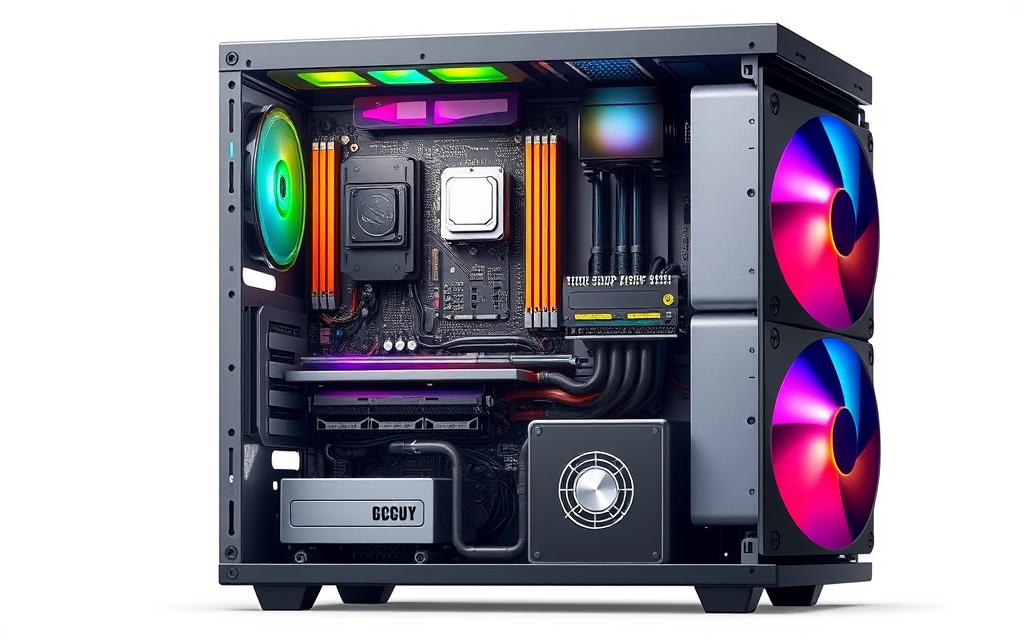
The Motherboard: The Heart of Your Computer
The motherboard is the main circuit board in your computer. It makes sure different parts of your computer can talk to each other. Everything from data transfer, to powering up, happens because of the motherboard. It’s packed with parts that help your computer work smoothly and stay stable.
Functionality of the Motherboard
A motherboard is crucial because it holds vital components like the CPU and RAM. It does important things like:
- Data Transfer: Lets the CPU, memory, and peripherals share information.
- Power Supply: Sends power to key parts such as the CPU and RAM through Voltage Regulation Modules (VRMs).
- Peripheral Connection: Offers ports for devices like keyboards and monitors.
- Expansion Slots: Has PCIExpress slots that let you add more capabilities like video or sound cards.
The Northbridge and Southbridge are key for the motherboard, helping connect the CPU, memory, and peripherals. The CPU socket allows the computer to process information efficiently. This shows how important the motherboard is for your computer’s power.
Form Factors and Compatibility
Motherboards come in different sizes and layouts, known as form factors. These include ATX, MicroATX, and Mini-ITX. They fit different types of computer cases and needs. Key aspects are:
| Form Factor | Dimensions (inches) | Typical Use |
|---|---|---|
| ATX | 12 x 9.6 | Standard desktop PCs, offering good expandability |
| MicroATX | 9.6 x 9.6 | Compact builds with moderate expansion options |
| Mini-ITX | 6.7 x 6.7 | Small form factor PCs, ideal for tight spaces |
Matching motherboards to the right cases and parts is key for the best performance. Knowing about different motherboard sizes helps people pick the right upgrade or build. It leads to a better computing experience.
The Central Processing Unit (CPU)
The Central Processing Unit, or CPU, is like the computer’s brain. It does the heavy lifting of running programs and carrying out orders. It makes sure everything works smoothly and quickly. Nowadays, CPUs have more than one core. This means they can do many tasks at the same time, boosting speed and productivity.
Understanding the Role of the CPU
What the CPU does is very important because it affects how fast and well a computer works. Its speed is measured in gigahertz (GHz), showing how many billions of instructions it can handle every second. People who need a lot of computing power, like gamers or those who analyse data, find this very useful. Also, newer CPUs can do more thanks to special designs like hyperthreading, making them even faster.
Importance of CPU Speed and Architecture
When looking at a computer’s performance, the speed and design of the CPU are key. A fast CPU with a modern design makes demanding software run better. Moving to a CPU with more cores makes a computer better at doing many things at once. Knowing about these things can help you choose the right parts for your computer. For more information on CPUs, check out this detailed overview.
FAQ
What are the main components of a computer hardware system?
A computer’s hardware system includes several key parts. These are the motherboard, CPU, GPU, RAM, and storage devices like HDDs and SSDs. They all work together to perform computing tasks.
Why is understanding computer hardware important?
Knowing about computer hardware helps users keep their systems running well. With this knowledge, people can spot problems, boost performance, and make sure software works smoothly. It’s like knowing how to take care of your health.
What is the role of the motherboard in a computer?
The motherboard is the heart of a computer. It connects all the hardware components. It holds the CPU, RAM, and storage connectors, managing data transfer and power. It also links peripheral devices.
How does the CPU influence computer performance?
The CPU is the computer’s brain. It processes all the logical operations and software instructions. Having a modern CPU with more cores means better multitasking and improved responsiveness for high-demand activities and games.
What factors should I consider when choosing a motherboard?
In picking a motherboard, think about its size, part compatibility, and expansion slots. Sizes include ATX, MicroATX, and Mini-ITX. Ensure it fits your case and works with your hardware for the best results and future upgrades.
What is the significance of RAM in a computer system?
RAM is like short-term memory for computers. It stores data for quick access, affecting how well a computer performs. More and faster RAM helps with running many programs at once and using demanding software.
How do HDDs and SSDs differ in terms of performance?
HDDs are older, magnetic storage devices. They offer lots of space for less money but are slower than SSDs. SSDs, however, store data on flash memory, leading to faster read and write times and better system performance.
